The Amateur Mycologist - Random Find - Tulostoma lloydii - A Puffball On A Stick (With Spore Microscopy And Non-Responsive KOH Test)
These posts are not for foraging. They are intended for entertainment and intellectual satisfaction only. These posts are not a field guide nor comprehensive in any way - their accuracy is not assured in any way. Do not eat wild mushrooms unless you are a professional, have substantial professional assistance or have a wealth of personal experience with a specific species. Do not make any foraging decisions based on these posts. To do so could be dangerous or life threatening.
These Posts Contains No Information Regarding Edibility Or Toxicity
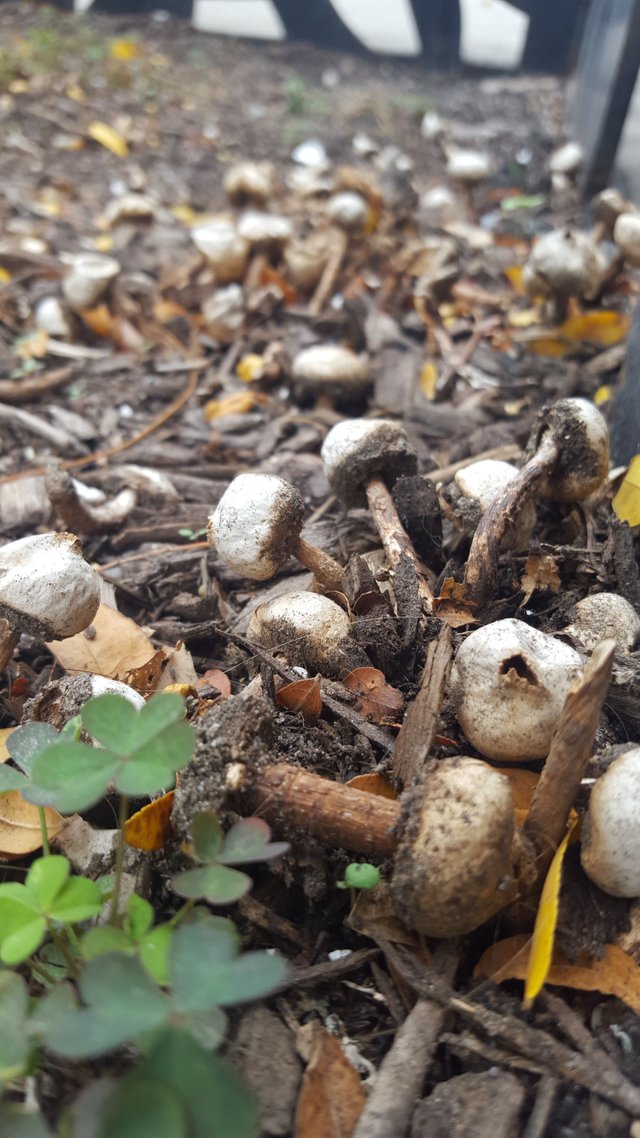
Just when you think you've got a handle on things, mushrooms throw a curve ball
We've seen a couple of puffballs at this point in the Amateur Mycologist. One of the first species posts we did was Lycoperdon pelatum, or one of the common puffballs. Sure, it was sort of weird looking at the time, but if you read along, you found out how it worked and perhaps it seemed less strange.
But the fungal kingdom didn't let up, and later we discovered Geastrum saccatum, basically a puffball surrounded on all sides by vaguely terrifying tendrils. "But why?" you might ask mother nature, only to be deafened by bemused silence.
Well, if you thought evolution was done with the puffball, then think again - cause today we're discussing Tulostoma lloydii, nothing more or less than a puffball lollipop.
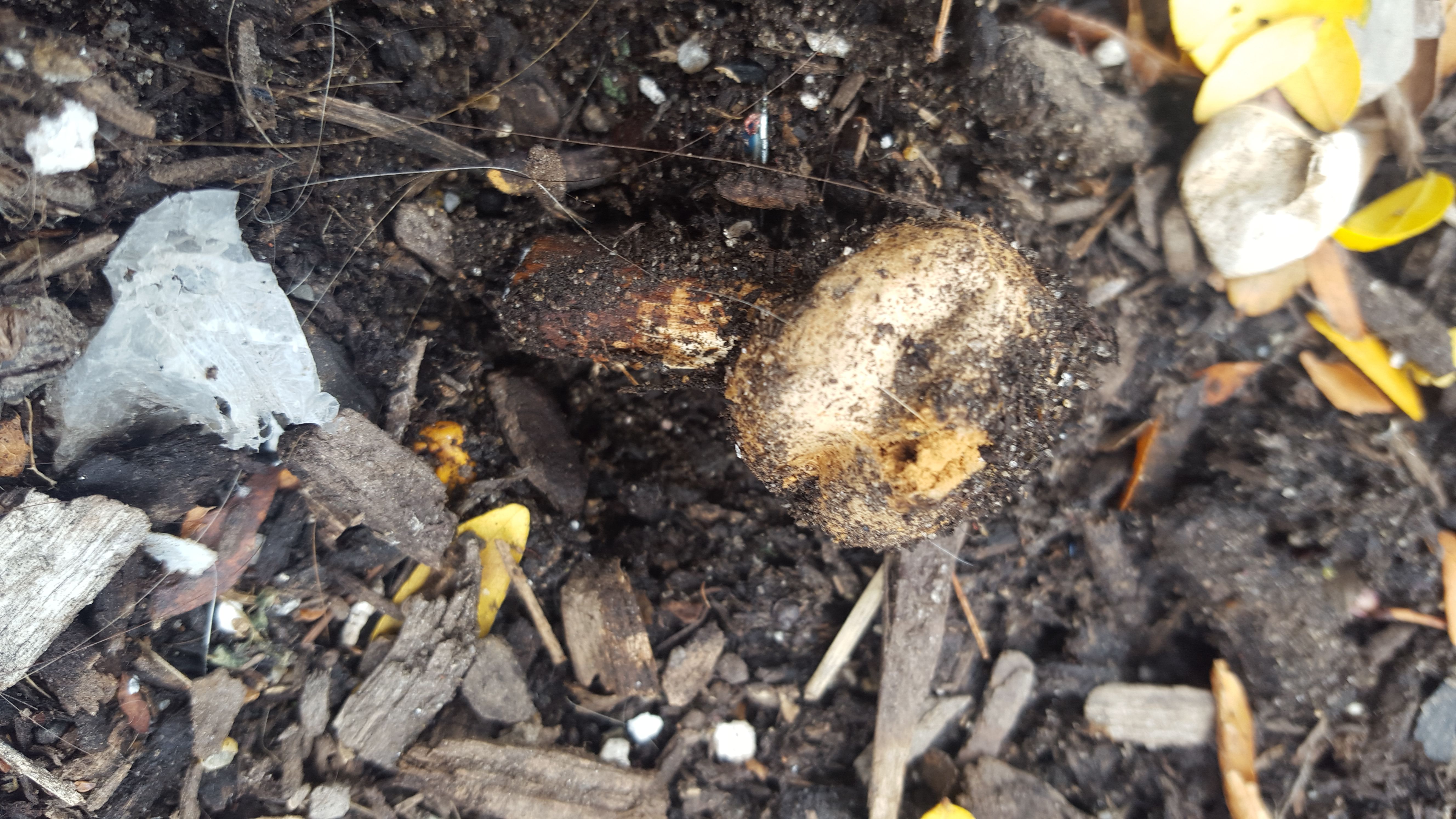
In the ground, from above, T.lloydii looks like any other terrestrial mushroom
Above you can clearly see the full stems and gleba caps of T.lloydii. All of the mushrooms pictured here were growing, as I am frequently finding, in one isolated patch of dirt sustaining a city tree in Queens, NY. Each patch seems to have a single species of mushroom which thrives inside of the self contained ecosystem, but never leaves. These patches of municipal dirt really are like the pacific islands of fungal life.
The picture directly above is a younger, but still mature specimen. However it has not yet developed its central spore hole. I had to uncover the stem by hand to take this picture, however, from above, this could be one of a thousand different types of mushrooms. Hell, it looks downright ubiquitous.
But when you bend down to examine the "spore surface" you are in for a big surprise.
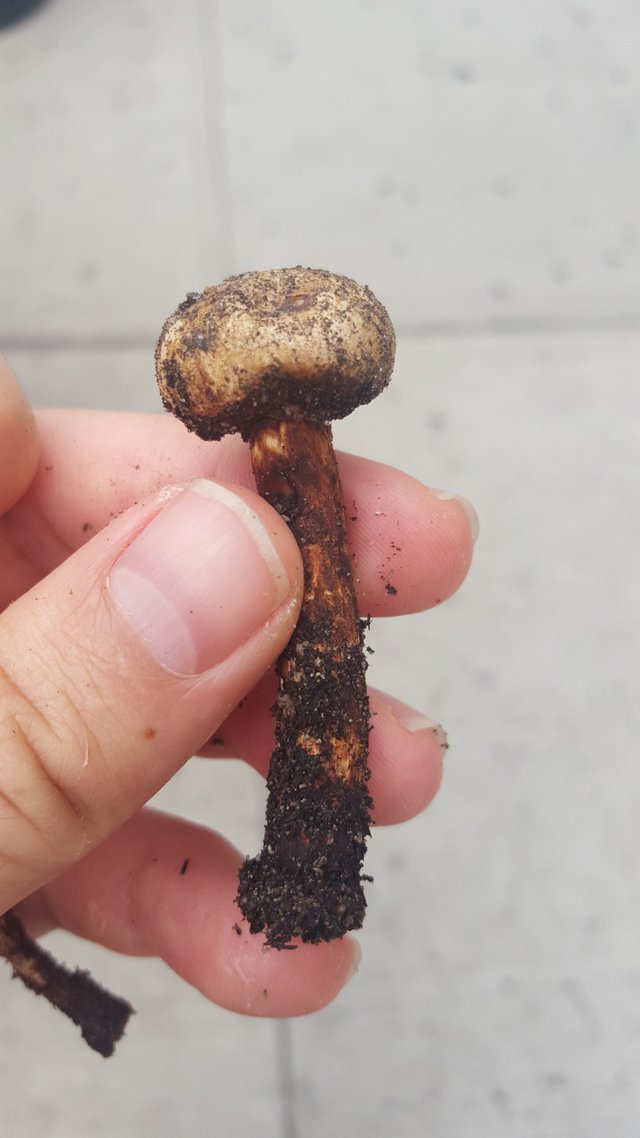
Wait... is that a...puffball?!
When I started posting about mushrooms on Steemit, I thought I would have to use primarily opensource photos and information derived from secondary and tertiary sources. But even just walking around New York City with my eyes toward the dirt and the trees has provided such a wealth of mycological content that I have rarely relied on non-first person encounters.
Case in point - this weird shit. What in the world is going on here? I had to do a double, then a triple take, before I believed what I was seeing. I had no idea stalked puffballs were a thing - period. In fact, I thought the whole premise of a "puffball" was that it had no stem!.
But nature will not long abide preconceptions. Let's take a closer look.
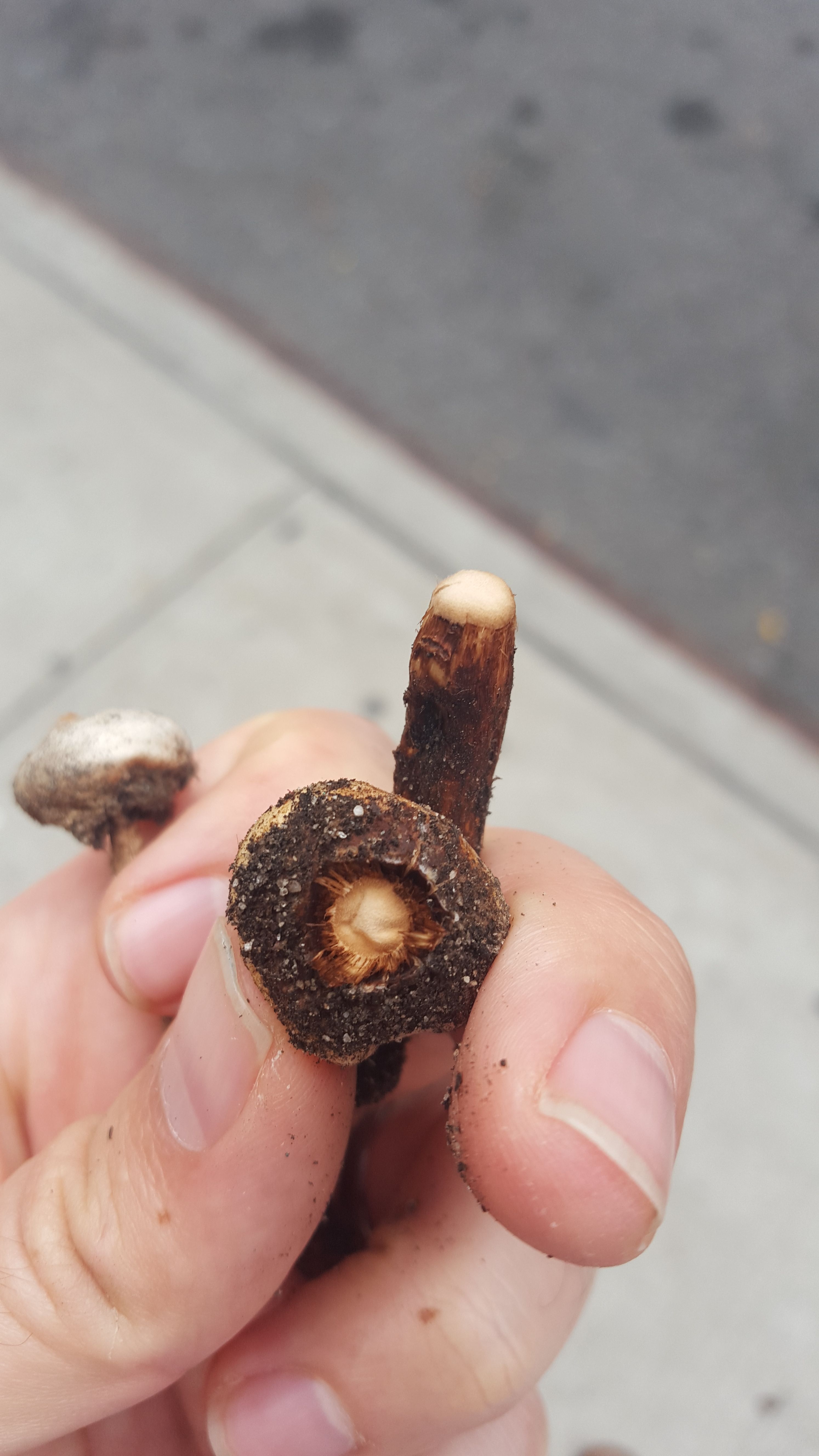
That's not false stem - it's the real deal
A lot of puffballs have a kind of "stem", but it seamlessly connects to the rest of the mushroom's gleba without any differentiation of structure. Not so with T.lloydii - that there is a genuine stem. It breaks away fairly cleanly from the cap, leaving an unnerving fleshy bald head at the top. The stem itself is dark brown but with patches of lighter color, and a bit scaly here and there. This one was about 4-5 cm long and wider at the bottom than the top by a bit. Most of the others were similarly dimensioned.
Let's take a look inside that stem
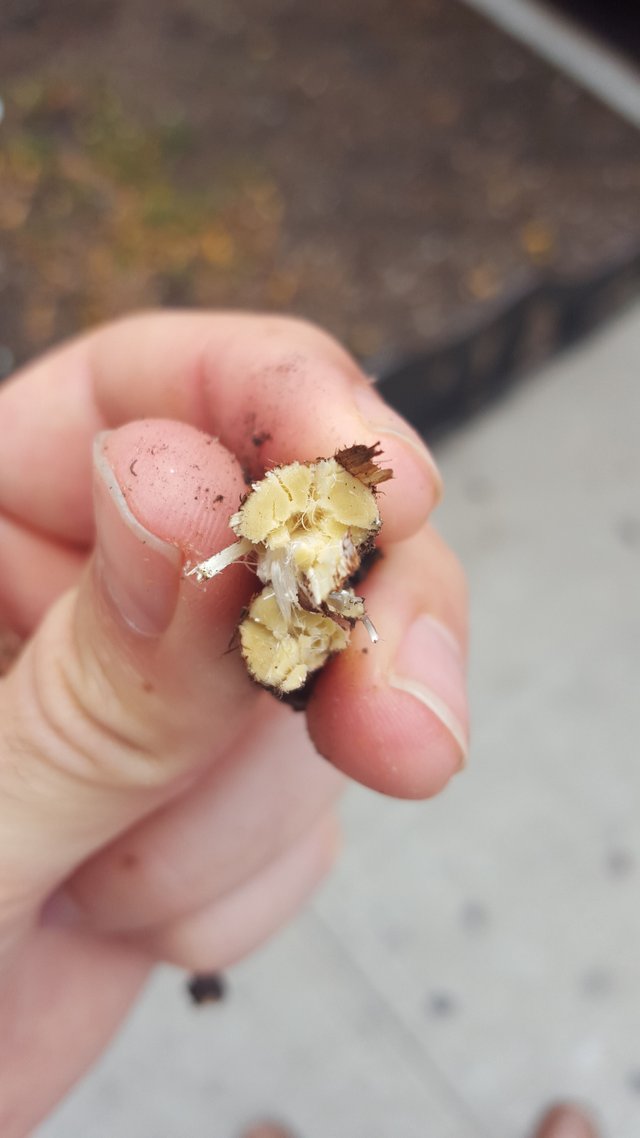
Took a bit of bending to get in, but eventually it snapped.
You can see that the inside is fibrous, almost like a young tree sapling.
Let's take a closer look at the cap, and it's spore guts...
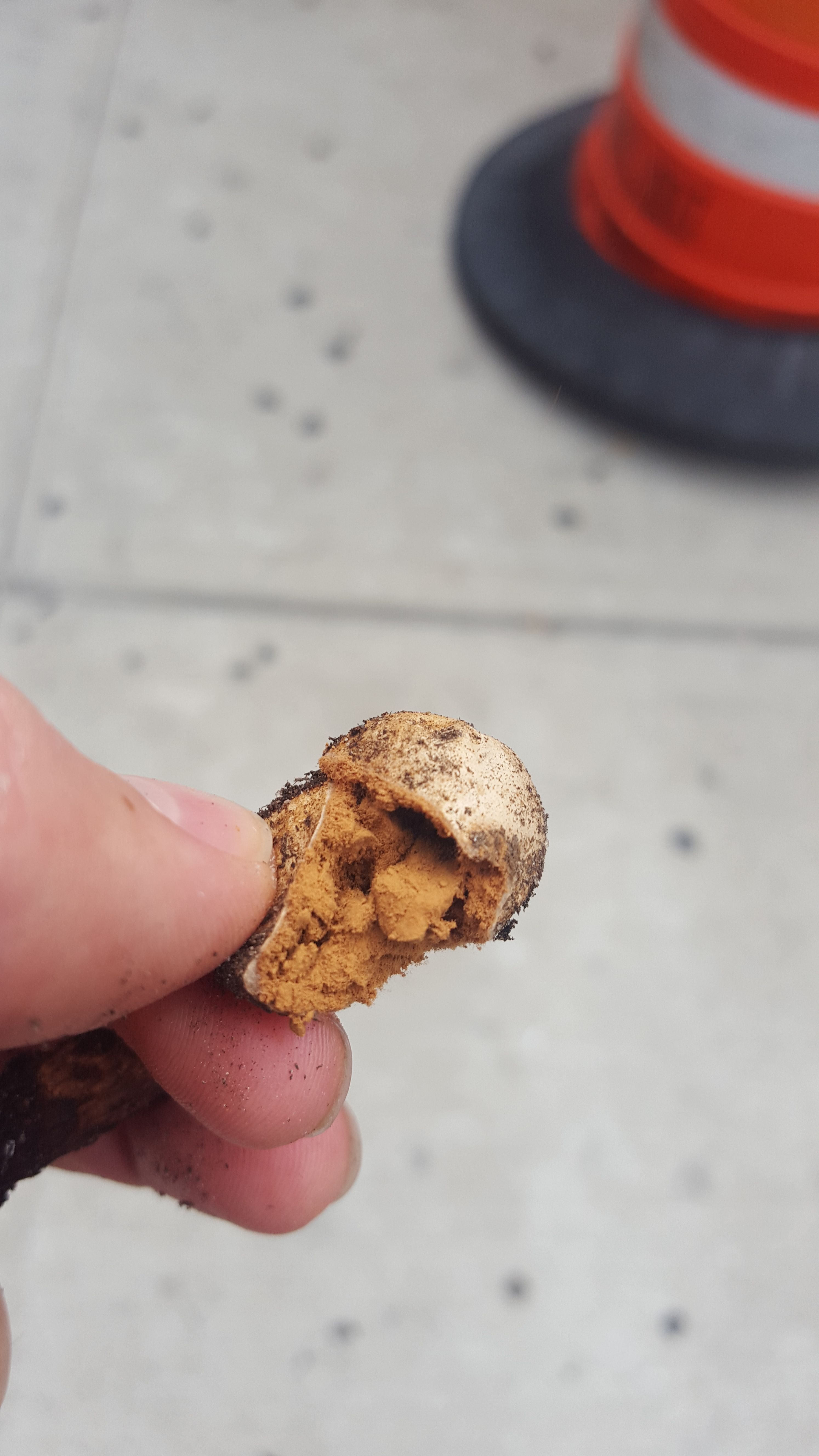
That ain't cocoa powder - it's millions upon millions of spores.
Here I've taken the cap the mushroom and manually tore it open to reveal the cocoa colored spore mass. Two things of note here:
In trying to tear the cap apart, no secondary hole in the cap formed releasing spores. This, as you can see in the video below, means that the mushroom was not ready to release its spores just yet. It may also mean that the mushroom has not yet shed the cap's thicker outer skin to reveal the tissue paper thin under skin. This is a feature Kuo mentions for all the Tulostoma species he covers, and although I did not identify the specific outer skin, all signs do point to a correct ID here. Apparently the outer skin sloughs off quickly when it does - and there can be no doubt that the more mature specimens had thinner skins by far.
The spore mass mostly stays together and does not explode all over me and my phone and the street in a terrible brown cloud. In hindsight, this was lucky. Another specimen I took home to test KOH and do some microscopy on was leaving plumes of spores whenever I brushed up against it.
Here's a closer look at a more developed cap.
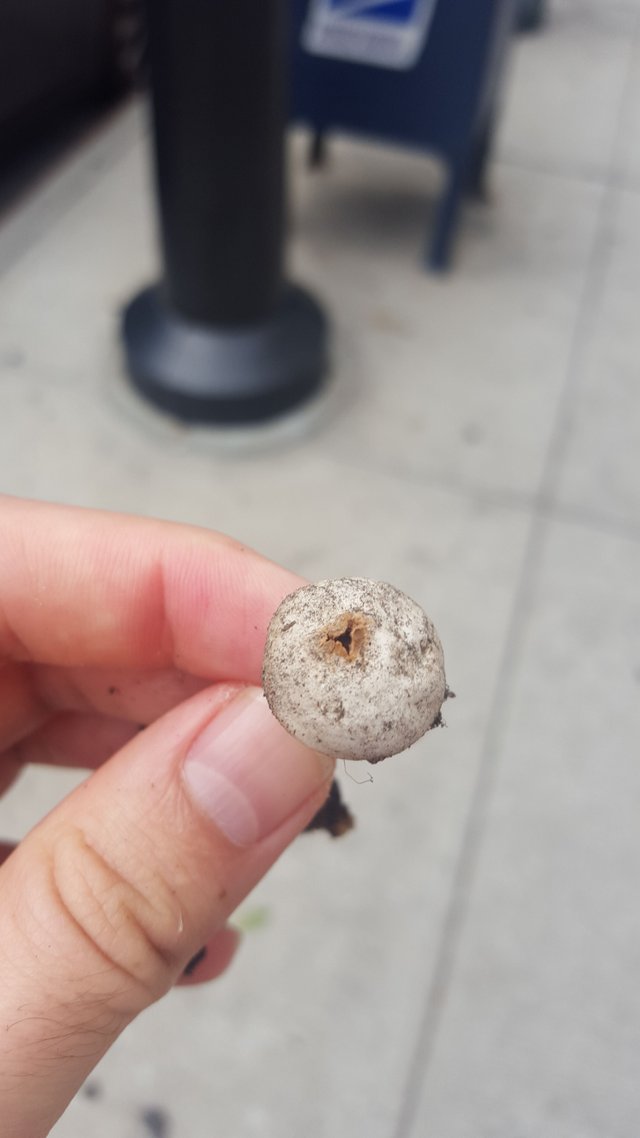
See here the white, thin skin of the cap, and the central hole for spore dispersal.
This mushroom had already expended the majority of its spores, but you can see that the cap color is quite lighter. Moreover, if I were to press it with my fingers, it would dent and tear quite easily at this point.
When they are ready to disperse their spores, they are really quite robust. Here I manually expel the spores, but this would happen quite naturally over a longer period of time.
I did get these under a microscope, for what its worth
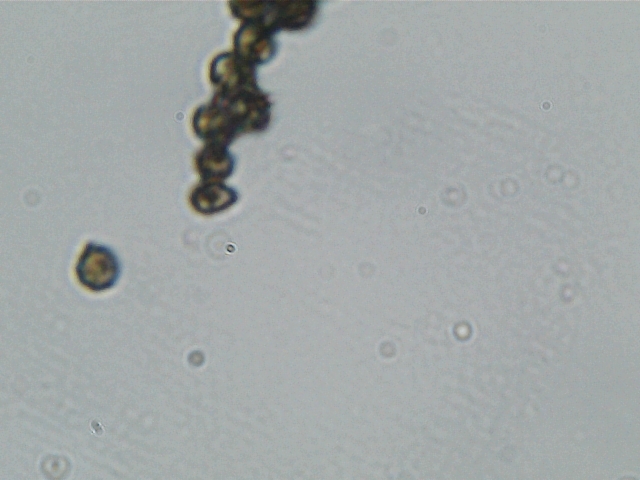
This photo provides little empirical data, but satisfies my own curiosity
As you can see, my microscope continues to lack, both in optic quality, but also any form of measurement - which really leaves these spores fairly contextless. However, I can say they were much darker than the previous pictures taken from an Agaric mushroom, with a dark central portion - and slightly larger on average. Most of the slide was positively covered in spores, to a degree that light hardly shone through them - this picture was chosen to better display the isolated spore.
Finally, this mushroom was KOH and Ammonia tested with no significant visible reaction. This is to be expected, as no specific reagent reaction is noted for this species on a macroscopic level. Microscopically, reagents might be more useful - but at the moment I don't have a good enough tool to make that determination.
T.lloydii has exposed me to an entirely new genus, and really entirely different conception, of the better known puffball mushroom. My consistent searching for new mycological content continues to pay dividends, and often coming from the strangest places, at the least expected times. For instance, believe it or not, I found this strange colony of oddballs outside a strip club on the way to the gym - as I have found several species I'd never before encountered just walking down the street.
Just keep your eyes peeled and you're bound to notice something new right under your nose.
THIS POST IS NOT INTENDED FOR FORAGING PURPOSES AND TO USE IT FOR THOSE PURPOSES WOULD BE DANGEROUS. DO NOT HUNT WILD MUSHROOMS WITHOUT RELYING ON A COMBINATION OF PROFESSIONAL FIELD GUIDES, IN PERSON PROFESSIONAL GUIDANCE, OR IN PERSON GUIDANCE BY SOMEONE TRUSTWORTHY WHO HAS COPIOUS LOCAL, SPECIALIZED MUSHROOM HUNTING EXPERIENCE. FAILURE TO DO SO CAN RESULT IN GRIEVOUS PERSONAL HARM OR DEATH.
Photos Are My Own
Information Sources:
[1]Kuo on T.lloydii
[2]Mycobank.org
[3]Saccardo, P.A.; Trotter, A. Sylloge Fungorum 21, 1912. Page 474 - Cited By Kuo Also
[4]Mycologia 38 (1), 1946. Page 77 - Also cited by Kuo
[5][The Good Folks in the NYCMS]
ı like mushrooms :))
it is fresh mushroom :)) I collected them today. :=)
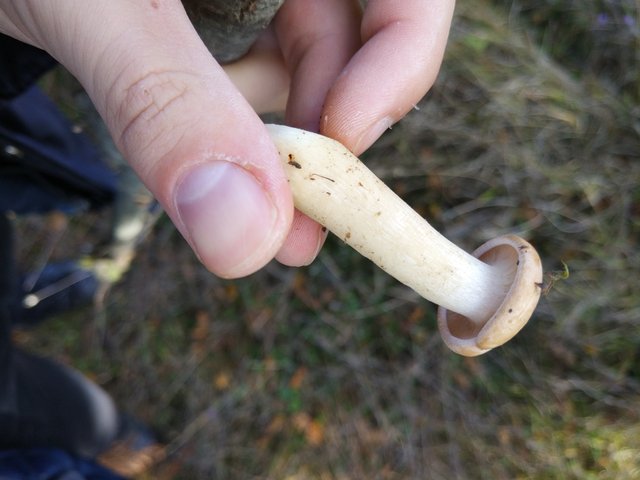
That's quite pretty, any idea what it might be?
nope :) I have no idea :) Just I went nature walk to take mushroom photos. :) and open my page :=) you can see different fungi.
Great work I am going to write a nice article about mushrooms too soon, also can make you some mushroom art if you can add on your post
I'll keep an eye out for your post - and I would be happy to feature your mushroom art in a post. If you pick a specific species and hew pretty closely to the details of that species, we might be able to make it into a standalone post!
thanks for info...good job.
I would have expected the opposite. The less robust they are, easier the spore can be spread away. Weird mushrooms :)
Well the spore mass loosens up and expands, at the same time that the thicker outer skin sloughs off and leaves the tissue paper thin skin behind. The result is an expansion that eventually punctures the skin and starts pouring those spores out into the world. Counter intuitive
Like many things! Thanks for the detailed explanation :)
a very detailed post
Thanks for reading - I aim for as much detail as I'm able.
thanks also have responded to my comment. i like you.
Indeed big thnx
Indeed big thnx